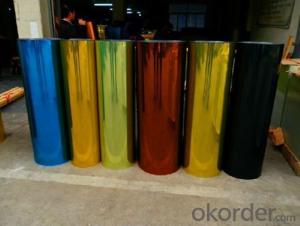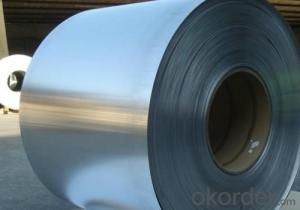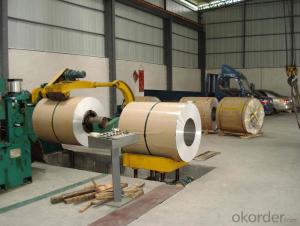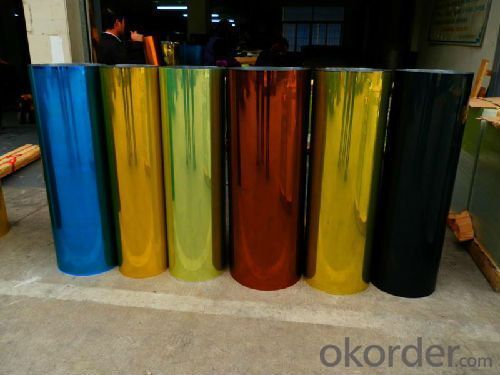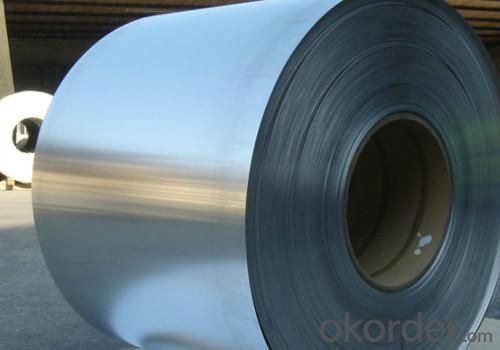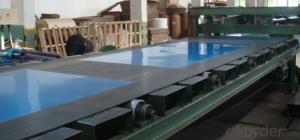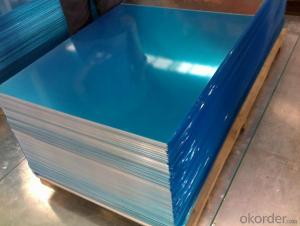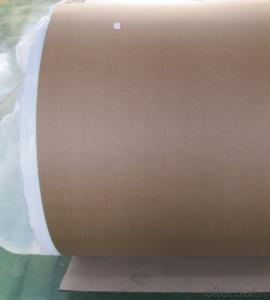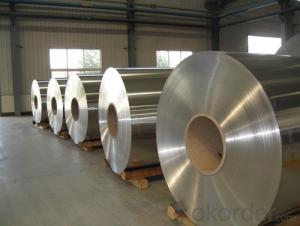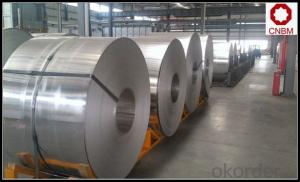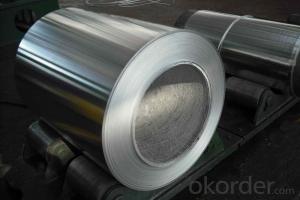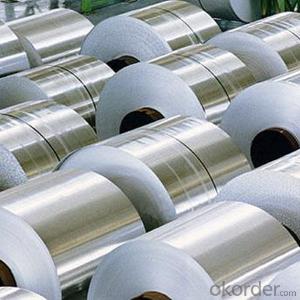Thin Aluminum Sheets - Mill Finish Aluminum Coil AA1050, 1100, 3003
- Loading Port:
- Shanghai
- Payment Terms:
- TT OR LC
- Min Order Qty:
- 5 m.t.
- Supply Capability:
- 9000 m.t./month
OKorder Service Pledge
OKorder Financial Service
You Might Also Like
Specification
Specifications
Alloys: 1050, 1100, 3003, 3004 3005, 3105, 5005, 5052, 6061, 6083 8011, etc O-H112
Thick: 0.09 - 150mm
Widths: 35 - 2,450mm
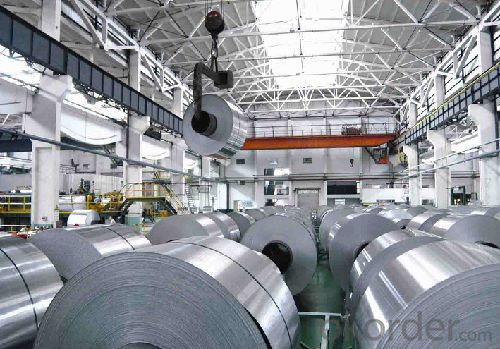
Perforated/Slitting Mill Finish Aluminum Strip Coil | |
Grade and Temper | Alloys: 1050, 1100, 3003,3004 3005, 3105, 5005, 5052, 6061,60838011,etc Temper: 0-H112 |
Widths | 35mm – 2,450 mm available |
Thickness | 0.09mm – 150mm |
Treatment | Perforated, Slitting ,Stucco Embossed and Coated |
Coil Specifications | I.D.: 405mm, 505mm O.D.: 800mm - 1270mm |
Packing Detail | Wooden pallet either eye to wall or eye to sky |
Application | Perforated Aluminum Ceiling Panel, Conner Bead, sifter for mechanical equipment and Fencing, etc. |
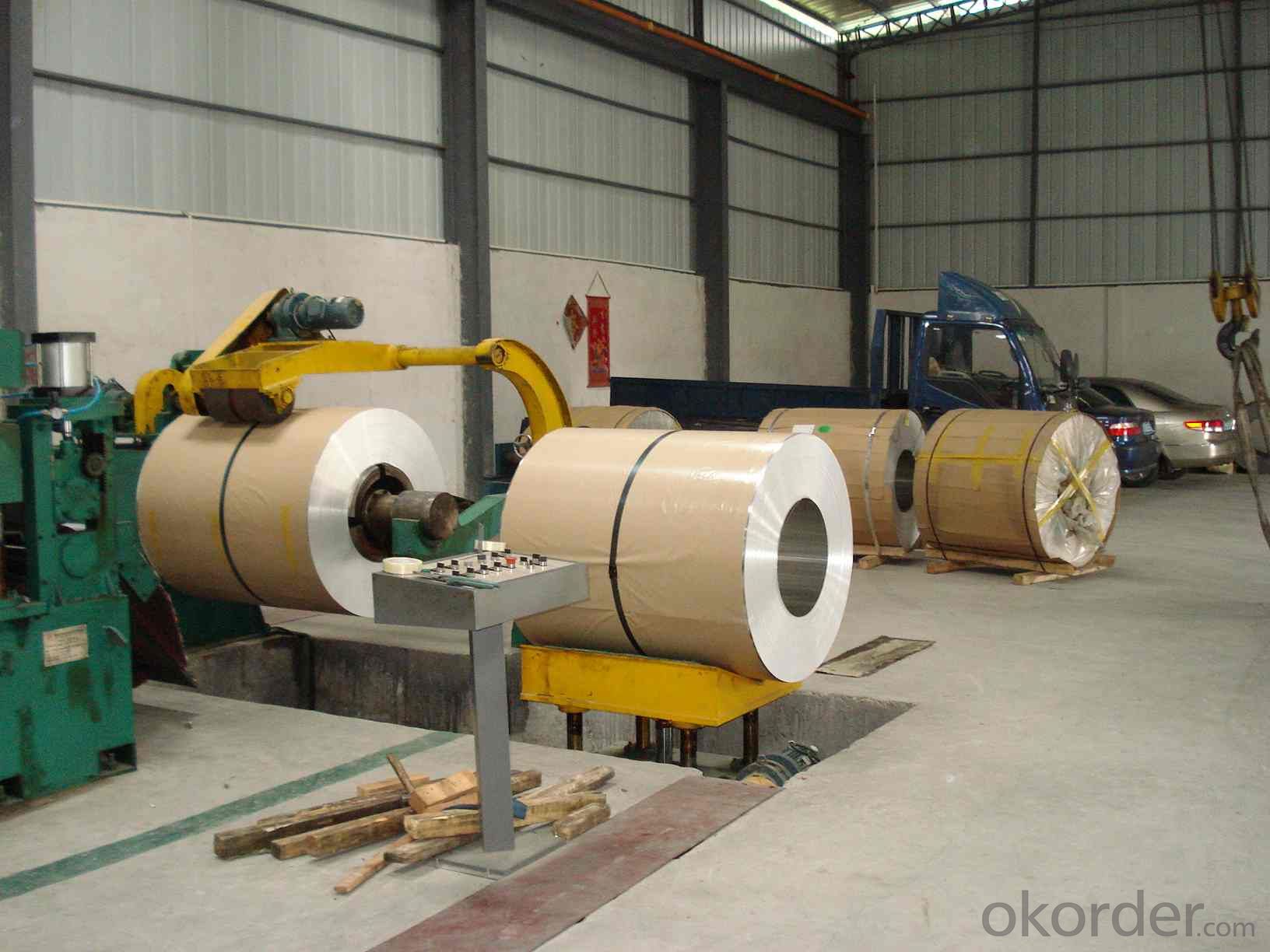
Application
For Mill Finish: Perforated Alumonum Ceiling Panel, Conner Bead, Sifter for Mechanical Equipment and Fencing. etc.
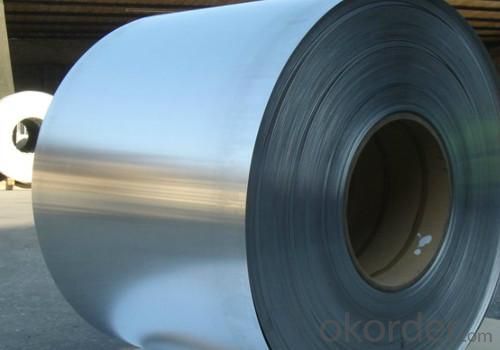
- Q: Can aluminum sheets be used in food packaging?
- Yes, aluminum sheets can be and are commonly used in food packaging. Aluminum is a popular choice for food packaging due to its excellent barrier properties, which protect the food from light, oxygen, moisture, and other external factors that can spoil or contaminate it. Aluminum sheets are lightweight, durable, and resistant to corrosion, making them suitable for various types of food packaging, such as foil wraps, containers, trays, and pouches. Additionally, aluminum is a recyclable material, making it an environmentally friendly choice for food packaging.
- Q: What kind of paint would you like to paint on the aluminum plate?
- Nitro paint, polyester paint can be mainly your base, you should use atomic ash treatment before you can use, otherwise it will peel off
- Q: What are the different types of aluminum sheets available in the market?
- There are several different types of aluminum sheets available in the market, including plain aluminum sheets, tread plates, perforated aluminum sheets, and decorative aluminum sheets.
- Q: Can the aluminum sheets be used for manufacturing ventilation systems?
- Yes, aluminum sheets can be used for manufacturing ventilation systems. Aluminum is a lightweight and corrosion-resistant material, making it a suitable choice for ventilation systems. Its high thermal conductivity allows for efficient heat transfer, making it ideal for applications where temperature control is necessary. Additionally, aluminum is easily formable, allowing for the creation of complex shapes and designs required for ventilation systems. Overall, aluminum sheets are a popular and practical choice for manufacturing ventilation systems.
- Q: Are aluminum sheets suitable for architectural applications?
- Yes, aluminum sheets are suitable for architectural applications. Aluminum is a versatile material that offers numerous advantages for architectural projects. It is lightweight, yet strong, making it easy to handle and install. Its corrosion-resistant properties make it well-suited for outdoor applications where it is exposed to the elements. Aluminum sheets can be easily formed into various shapes and sizes, allowing for creative and innovative architectural designs. They can be used for cladding, roofing, facades, and interior applications such as ceilings, partitions, and decorative elements. Additionally, aluminum sheets are available in a wide range of finishes, including anodized, painted, or coated, providing architects with the freedom to choose the desired aesthetic for their projects. These finishes can enhance the durability and color retention of the material, ensuring long-term performance and minimal maintenance requirements. Moreover, aluminum is a sustainable material as it is fully recyclable and has a low carbon footprint compared to other metals. This aligns with the increasing focus on environmentally-friendly construction practices in the architectural industry. In summary, aluminum sheets are highly suitable for architectural applications due to their lightweight, strength, corrosion resistance, versatility, range of finishes, and sustainable attributes. Architects can confidently choose aluminum sheets to create visually appealing and durable structures.
- Q: What are the different types of alloys used for aluminum sheets?
- There are several types of alloys commonly used for aluminum sheets, each with its own unique properties and applications. Some of the most common types include: 1. 1100 alloy: This alloy is pure aluminum with excellent corrosion resistance and good formability. It is often used for general sheet metal work, such as roofing and siding. 2. 3003 alloy: This alloy is similar to 1100 but with added manganese, making it slightly stronger. It is commonly used for applications that require moderate strength and good corrosion resistance, such as packaging and automotive parts. 3. 5052 alloy: This alloy is known for its excellent corrosion resistance, especially in marine environments. It also has good formability and weldability, making it suitable for various applications like fuel tanks, marine components, and architectural panels. 4. 6061 alloy: This alloy is one of the most versatile and widely used aluminum alloys. It offers excellent strength, weldability, and corrosion resistance. 6061 is commonly used in structural applications, such as aircraft parts, bicycle frames, and automotive components. 5. 7075 alloy: This high-strength alloy is often used in aerospace and military applications. It has excellent fatigue resistance and good machinability. 7075 is typically used for aircraft structures, missile parts, and high-stress components. These are just a few examples of the various types of aluminum alloys used for sheets. The specific alloy chosen will depend on the desired properties, such as strength, corrosion resistance, formability, and cost, as well as the intended application.
- Q: What are the common aluminum sheets and the best ones?
- That depends on what you are doing, and commonly used on 3003 and 5052, the performance is better to use 6061
- Q: What is the thickness range available for aluminum sheets?
- The specific requirements and applications can cause the thickness range of aluminum sheets to vary. Typically, aluminum sheets come in a variety of thicknesses, ranging from very thin at 0.006 inches (0.15mm) to very thick at 0.5 inches (12.7mm) or even thicker in certain cases. It should be noted that the supplier or manufacturer may have different availability of specific thicknesses. Furthermore, specialized fabrication processes can often provide custom thicknesses.
- Q: Can aluminum sheet be used for cookware?
- Yes, aluminum sheet can be used for cookware. Aluminum is a popular choice for cookware due to its excellent heat conductivity and lightweight properties. However, it is usually combined with other materials, such as stainless steel or non-stick coatings, to enhance its durability and prevent any potential reactions with certain foods.
- Q: What are the different types of surface coatings for aluminum sheets?
- There are several types of surface coatings available for aluminum sheets, including anodizing, powder coating, painting, and laminating.
Send your message to us
Thin Aluminum Sheets - Mill Finish Aluminum Coil AA1050, 1100, 3003
- Loading Port:
- Shanghai
- Payment Terms:
- TT OR LC
- Min Order Qty:
- 5 m.t.
- Supply Capability:
- 9000 m.t./month
OKorder Service Pledge
OKorder Financial Service
Similar products
Hot products
Hot Searches
Related keywords
